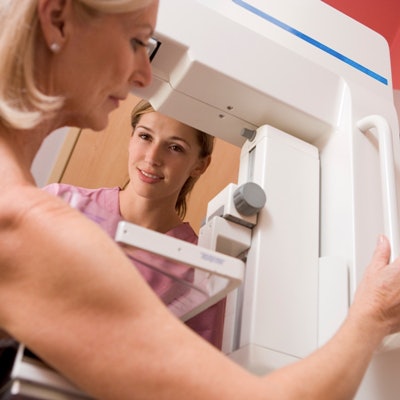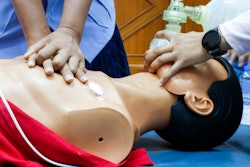
Getting in the correct position is vital. That's the overriding conclusion of Portuguese researchers who have identified postures for radiographers and given practical advice that will help to reduce work-related musculoskeletal disorders when performing mammograms.
The study team led by Nicolai Cernean, a radiographer at Escola Superior de Tecnologia da Saúde de Lisboa, simulated radiographers' postures when positioning patients for a mammogram and found alternative postures, such as sitting, could potentially reduce work-related injuries (Insights into Imaging, August 2017, Vol. 8:4, pp. 429-438).
"Introducing postural alternatives to the standard procedure (seating and/or raising patient or radiographer), for the most extreme scenarios such as the radiographer being taller or shorter than the patient, can reduce the risk of work-related musculoskeletal disorders," they wrote.
What's the remedy?
To perform the mammography examination, radiographers need to repeat movements and assume awkward postures to position the breast for standard views: craniocaudal (CC) and mediolateral oblique (MLO). The repetitive movements, equipment manipulation, long hours, heavier patient loads, less staff coverage, and fewer opportunities for downtime can promote the development of work-related musculoskeletal disorders, according to the researchers.
Do alternatives exist? Will different postures help combat the development of these disorders? That's precisely what the researchers sought to discover. They simulated three scenarios: radiographer/patient with similar statures, radiographer smaller than patient, and radiographer taller than patient.
The researchers modified postures by seating the radiographer, putting the patient on a step, seating the patient, and putting the radiographer on a step. All postures were analyzed using Kinovea 0.8.15 software, and the angles were measured twice and classified according to European standard EN1005--4: 2005.
Cernean and colleagues found nonacceptable angles were measured mainly during MLO positioning when the radiographer was taller than the patient: 139° and 120° for arm flexion and abduction, 72° for trunk, and -24° for head/neck flexion. When the radiographer sat down, the angles improved: 60° and 99° for arm flexion and abduction, 14° for trunk, and 0° for head/neck flexion.
Preventing work-related musculoskeletal disorders should be prioritized, and introducing changes that allow maintenance or even promotion of workers' health are preferable, the researchers concluded.
This article is open-access and is available here.



















